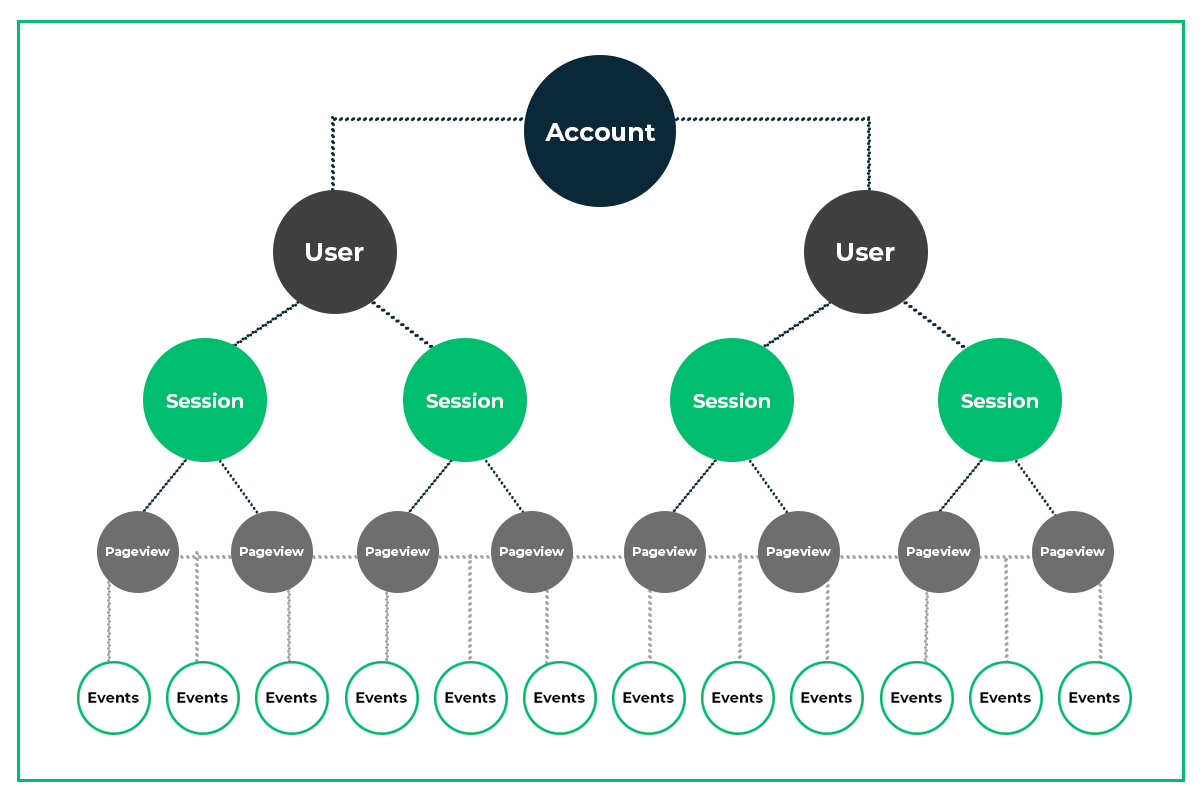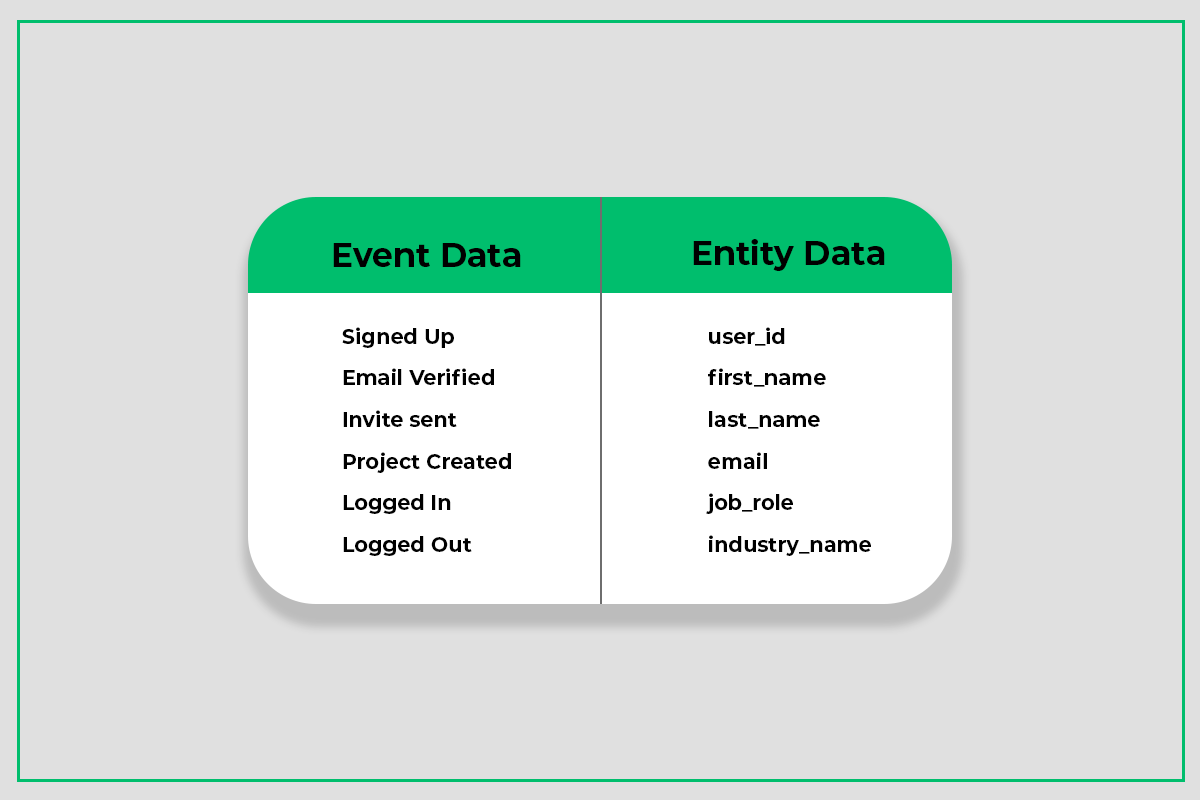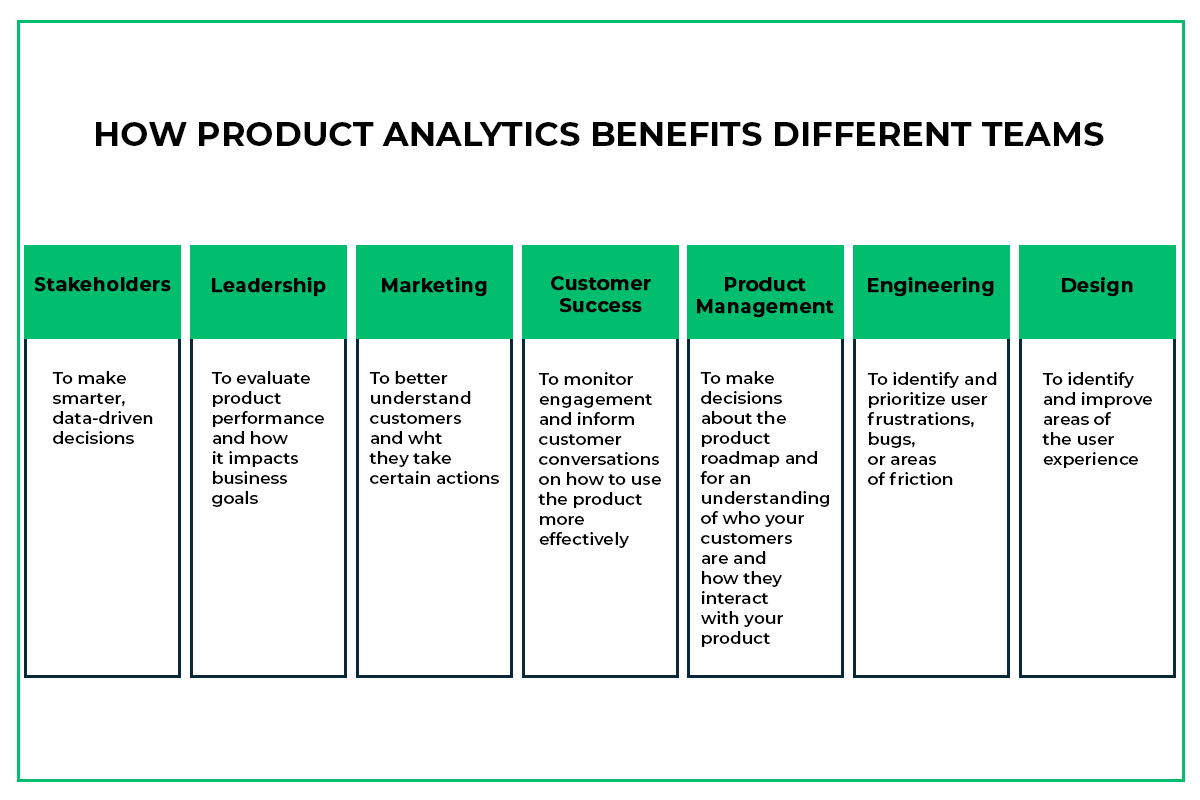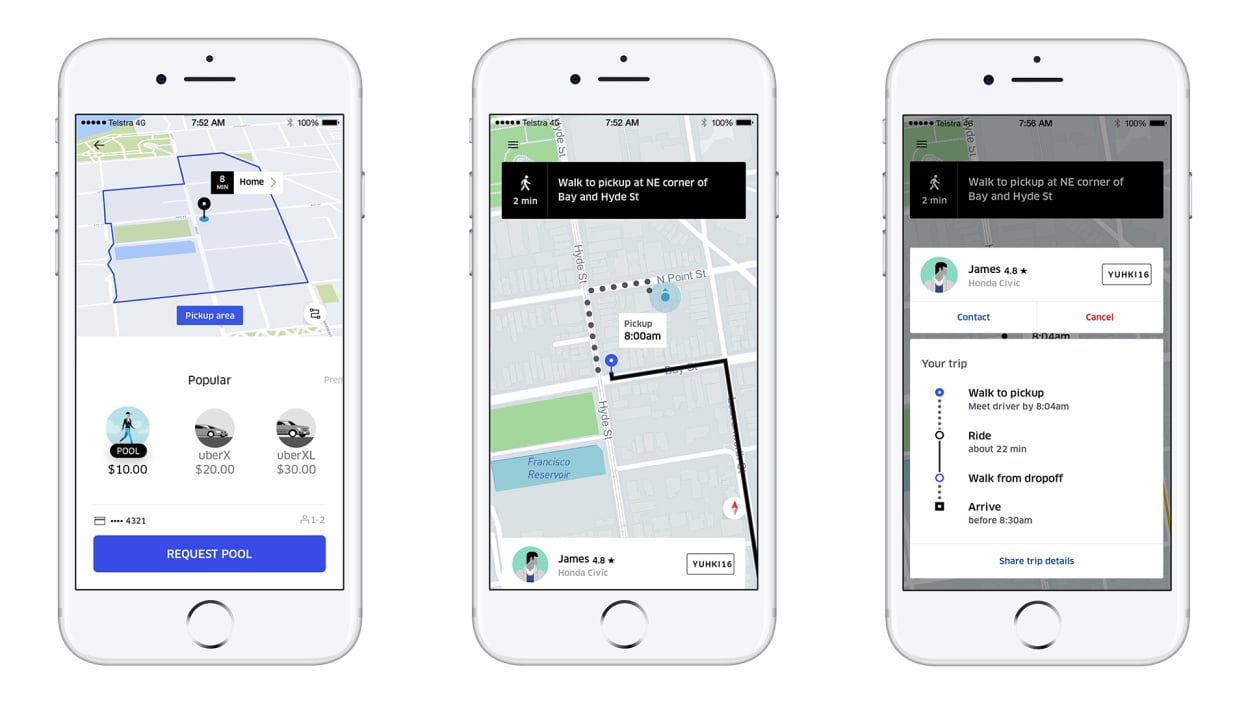How To Use Data & Analytics To Scale Products Reliably In 2023

The process of building a product and then scaling it is vastly different for a Product Manager. When PMs ideate on building a product, user research plays a pivotal role (qualitative) but when it comes to scaling, one has to be guided via accurate data & analytics to support the vision.
The foundations of decision-making, reiterations, strategy building, and all macro elements of building a sustainable business revolve around data-driven insights. At present, organisations are excessively infusing data and analytics to scale products so they can proactively respond to changing demands across their business verticals.
So how do you master the art of data & product analytics to scale products and eventually become a great product manager for the business? Let’s deep dive and figure it out!
Data Semantics – Identifying and defining data to scale products
While drafting a roadmap to scale products and features, it’s essential to also figure out the data model and its semantics to ensure the tracking is in place. The foundational blocks for this could be a bunch of events and their attributes used to track and perform analysis on what your users are doing while using your products.

These are usually categorised into user data and event data in the most popular product analytics tools.
User data helps you understand details about each of your users and their attributes such as User ID, name, source of acquisition, country, birthdate, age, gender, and literally any data point that maps back to the user.
Events data on the other hand enables you to gain in-depth insights into user interactions across your product. Examples of such events could be an app install data, sessions, login/signup, purchases, add to carts, screens/pages viewed, button clicks, search and any essential action that a user might actively take.

Based on your precise use cases, it’s then important to choose the right product analytics tool to use for your product. If your company already uses one, you’d have an SOP in place for event instrumentation. If you’re starting from scratch, you’ll have to narrow down the tool of your choice and then configure this on your product.
Complementary tools for Product Analytics
There are a lot of supplementary tools that go along with a product analytics tool such as CRMs, marketing automation platforms, etc that help you leverage the data for building segments, funnels, and journeys based on user behaviour (events data). This in turn helps both automate communications and set triggers on certain sets of data which not only improves your user’s product experience but removes a lot of manual work from the internal teams.
How to Gather & Use Data-driven Insights
The process to scale a product needs data to support that growth with the right tools as well as a fair bit of insights. Insights help you identify “aha!” moments within the product that drive strong features and help with the optimisation of key UX elements which leads to better conversions. If you want to be able to extract insightful information from a large amount of data, you must first generate enough data to play around with and run analysis to drive informed decisions.
Product teams leverage data to validate decisions all the time, but data when combined with the right insights could tell different stories.
In pursuit to make data a strategic lever for growth, product managers should look at these four key areas, i.e:
- Team – To align/divide tasks in a structured manner to avoid gaps
- Tools – To gather the right data for analysis and tracking
- Stage – To check how mature the product and data are to build processes
- Strategy – To use it to dictate product strategy at a higher level
As a Product Manager, you would have different kinds of data coming in. Some of these would not be mutually exclusive and you could get better insights by blending them. Quantitative data would provide hard numbers but less insight. For example, the number of reviews an app gets vs the written reviews it has. Even though unstructured, the qualitative data hidden in written reviews would provide better insights.
Below are some key things to remember while working with different kinds of data:
- Quantitative metrics would provide hard numbers and help with validation but relatively lesser insight.
- Actionable metrics in contrast to vanity metrics will provide you with a course of action.
- With the use of leading metrics, you can predict future outcomes more reliably.
- You can alter these outcomes if you can establish a correlation between what you want (like revenue) and something you can influence (like what ads you display).
- Big bets should only be taken with enough conviction from data as well as insights gained via qualitative user research
What metrics to use when is highly based on what you would like to know with the provided outcome. While this is commonly understood, a major part of this comes with solving where to put this data to use. Most Product Managers are confused about prioritising. But if you set up the right test with the right data along with a benchmark to base decisions on, things start falling into place.
Product Example
Suppose a Product Manager wanted to understand why a particular product feature is not increasing sales as expected. In that case, they could collect data on customer demographics, usage habits, and market trends to understand customer satisfaction. They could then analyse this data to identify trends and patterns that may be contributing to poor sales performance. The PM could then communicate these insights to relevant stakeholders, such as the sales team or marketing department, and use them to inform strategy and decision-making. The PM could also use these insights to inform the development of a new product roadmap, which outlines the priorities and direction of future product development.
Related: Types of Data Analytics to Improve Business Decision-Making
How Data Insights Feed into a Strong Product Roadmap
A product roadmap clearly lays out the next set of features that will be built in order of priority over time. It’s very tempting to get too overwhelmed with a ton of data seeking your attention. Although the optimal number of metrics to follow may differ for each company, it’s best to concentrate on about five KPIs per business unit that you can watch over time and communicate with your executive stakeholders on a regular basis. Be aware of avoiding vanity metrics that don’t speak directly about the hypothesis you are testing or your key business goals.

To effectively inculcate data-driven insights into a product roadmap:
- Obtain all the information from primary or secondary sources for a key metric.
- Create a user story based on the insight and tie these metrics to specific strategic goals of the business.
- Now you rank these stories in order of priority based on their importance to the KPIs you’ve set either for the product or business.
This helps you keep your product roadmap tightly tied to the data you gather from your actual users.
Product Example
Let’s say you’re the PM of a diet-tracking app, and this quarter’s goal is to increase user engagement on the app. You notice from your current data that the users open the app only 2-3 times to log their food intake so the use case is pretty limited. To increase the frequency of app usage, your team comes up with the idea of introducing a water intake calculator.
To validate whether this should be included in the product roadmap, the team could analyse current usage patterns to understand the pain points they encounter. They could also conduct customer surveys to gather more detailed feedback on the feature request and to better understand the needs and preferences of users.
Based on this data, if it’s positive, the team could then develop a detailed plan for implementing the water tracking feature, including a timeline, resources needed, and any potential risks or challenges. This information could then be included in the product roadmap to guide the development process and ensure that the feature meets users’ needs.
Measure success/failure to drive product decisions
Just building products or features don’t define success, it should be deliberately measured to find whether the launch meets the set success criteria. Alternatively, it should also have methods to iterate through failures.
There are a lot of ways Product Managers measure the success/failure of product launches and it’s essential to cut the noise and focus on the right data which allows them to make legit operational decisions. Or else, a lot of data could be indecisive if multiple versions co-exist.
While implementing or deciding a new product strategy, the best way to ensure proper functioning is to define certain qualitative & quantitative success metrics. Businesses and Product managers often look at past or historic data to set benchmarks or to define KPIs(Key performance indicators).
KPIs are the strongest defensible tool for decision-making that helps identify the progress of work of teams, products, and overall business.
This could help product teams get answers on drawbacks or bottlenecks the teams had to face while reaching certain metrics – to overcome them and build strategies accordingly
Uber Case Study
A great example of this would be the launch of a feature called “UberPOOL” in 2014 by cab aggregator Uber. UberPOOL allowed users to share rides with other users who are travelling in the same direction, which allows them to save money on their rides.
Before launching UberPOOL, the company conducted market research and analysed data on customer demand and behaviour. The data showed significant demand for a shared ride option, as many users were willing to trade a slightly longer ride time for a lower price, especially in a price-sensitive market like India.

Based on this data, the company decided to launch UberPOOL as a new feature within the main app. The launch of UberPOOL was considered a success, as it helped the company to tap into a new market segment and increase its revenue. UberPOOL also helped the company to differentiate itself from its main competitor, Ola, which did not offer a shared ride option at the time. In this case, data analysis played a key role in informing the decision to launch UberPOOL as a new feature and then measuring its success. By understanding customer demand and behavior, the company was able to make a more informed decision about the potential success of the feature and ultimately drive business growth.
Conclusion
As a Product Manager in a growth stage company where the need of the hour is to blitz scale your product, base your instincts on data more than anything. That is why it is imperative to master the art of data & analytics to scale and grow your products. Hopefully with the learnings gathered from here, you’ll be able to set up the right data tools, use them to drive decisions, then craft your product strategy and eventually measure if things are moving in the right direction. In the world of product analytics, one should always remember to go by your gut, but be data-informed. Hence you should take professional online courses and certification programs in order to ace data and product analytics knowledge. Emeritus product management courses are the ideal course for you if you want to acquire knowledge at your convenience and flexibility.







